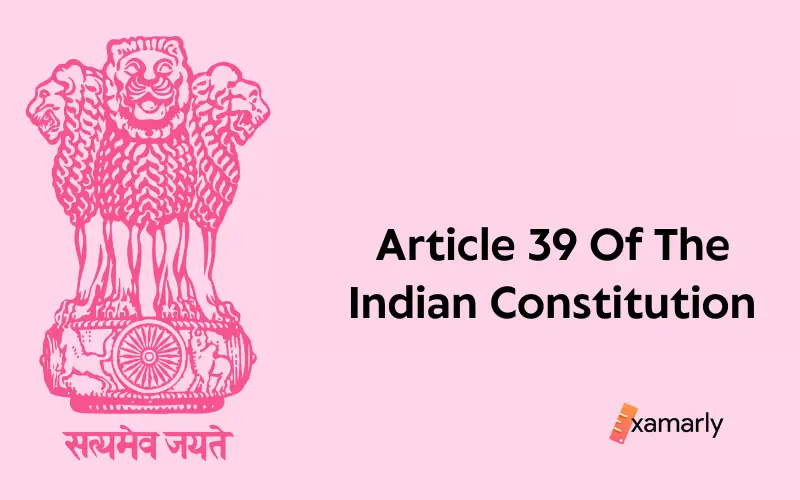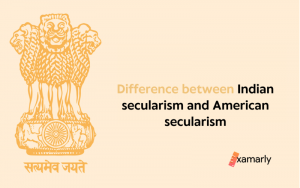Article 39 of the present day Indian Constitution originally occupied the position of article 31 of the draft constitution. That draft article was discussed in the constituent assembly on November 22, 1948. It advocates for looking after the economic welfare of the people of the nation, especially the weaker sections.
Debates On The Article 39 Of The Indian Constitution
The Socialists in the Constituent assembly felt that the constitution did not provide enough window for the proliferation of the socialist principles. They pointed out the anomaly of the situation by calling out the phrase “ownership and control of material resources” which presumed individual capitalistic interests.
Another member pointed out that the state’s preoccupation with the wealth can be justifies only when India sought to build a communist state. But India did not seek such a label for herself. So, the accumulation of wealth was not quite the problem rather amassing huge amounts of wealth in a few hands would be the problem.
Later, the Constituent assembly came to the resolution of keeping the provisions of Article 39 general and extensive. A minor amendment was made with respect to the inversion of “the strength and health”.
Related – Certain principles of policy to be followed by the State.
Salient Features Of Article 39 Of The Indian Constitution
- Article 39 of the Indian Constitution is a Directive Principle of Policy. The directive Principles of policy collectively appear in the part IV of the Constitution. Article 39 is essentially non judicial. It is not backed up by suitable legislation and is non verifiable before any court of law. However the Central and State Government both are expected to follow the provisions of article 39 so that the general condition of living is uplifted and the State can adhere strictly to the socialist policies that were the driving forces of the Indian Constitution.
- The governments at the centre and state both are expected to deal with proceedings in respect to the Directive principles of state policy so that the dream of the welfare society is realised. This article in relation to the other articles from Articles 36-51 of the Constitution form the Directive principles of state policy. all the Directive Principles can be divided into three broad categories : Gandhian, Socialistic and Liberal. Article 39 is essentially socialistic.
- DPSPs although not enforced by law are to be staunchly exercised both as moral principle and judicial principle when it comes to making new policies and laws, or modifying former policies and laws with respect to smooth functioning of the State.
- Article 39 makes provision with respect to looking after the improvement of the human condition by distributing the employment in society equally between both the sexes. In other words, this article seeks to establish an egalitarian society which is also a welfare society simultaneously.
- The directions under clause 1, 2, 3 and 4 are all enmeshed. Each of the clauses is dependent on the other for the dream of welfare society to be realized. The provisions of clause, first to fourth, builds grounds for the participation of workers actively towards the strengthening of the economy. Both the public services and private services are hinted at following the provisions of Article 39 and improve their conditions of service, and look after the health of workers and bring innovation with respect to proper disposal of service matters.
- The State should make policies to guard the wealth from being concentrated into an association of persons presumably from the higher strata of the society. The office of profit and funds to people should be evenly distributed among all sections of society including weaker sections. The State should make sure to assert control over material resources and generate an equal, justified resource distribution.
- Employment opportunities should be increased. Simultaneously, the State should make sure that humane conditions prevail at the workplace and make any failure of justice pay its due with both appellate jurisdiction and exclusive jurisdiction powers. In all cases, there should be harmonic installations under Constituent power of the house of parliament, civil power and executive power of the State for proper administration of justice.
- The State should also provide for the children for them to develop in optimum conditions that would favour their growth in best terms, both physically and mentally. Childhood and youth are to be protected at all costs against the possibilities of capitalist exploitation or along the lines of moral or material abandonment.
- The role of this article for article 45 that is directed to child welfare can be spotted. The engagement of this article for article 38 is noteworthy too. Both article 38 and article 39 are based on socialist principles.
You Might Also Like – Article 38 Of The Indian Constitution
Article 39 Of The Indian Constitution – As It Is
Article 39 is quoted in the Constitution as follows. Its clauses are directly addressed and can be understood by a layman too.
“The State shall, in particular, direct its policy towards securing
- that the citizens, men and women equally, have the right to an adequate means to livelihood;
- that the ownership and control of the material resources of the community are so distributed as best to subserve the common good;
- that the operation of the economic system does not result in the concentration of wealth and means of production to the common detriment;
- that there is equal pay for equal work for both men and women;
- that the health and strength of workers, men and women, and the tender age of children are not abused and that citizens are not forced by economic necessity to enter avocations unsuited to their age or strength;
- that children are given opportunities and facilities to develop in a healthy manner and in conditions of freedom and dignity, and that childhood and youth are protected against exploitation and against moral and material abandonment.”
Summing Up
The provisions of article 36-51 are not to be considered empty moral principles. Their contribution to building the nation that had been envisioned by the great freedom fighters and the sages of our country is immense. They uphold the moral implications that come to question when the addition or deletion of provisions of articles are done. The State and both the houses of the parliament are expected to follow DPSPs strictly when formulating any laws with respect to basic structure of the constitution. So, both part III and part IV of our constitution help in realising the dream of the welfare state. Article 39 has been influential when the land and labour reforms were brought in, and the resource distribution was made more equitable. Laws with respect to cooperative farming and provisions with respect to abolition of Child labour were made.
FAQs
1. Article 39 has yielded major changes in the economic fabric of India. Justify.
Firstly, land reforms were introduced to bring overall good impact on the rural masses who lived off from an agrarian economy. The Acts namely affects the abolition of Intermediaries in farming, jagirdars, zamindars and the like. Change in provisions with respect to fairness in security of tenure and regulation of rent were also made. Landless farmers were given land after the redistribution of land and the introduction of a ceiling mark in land holdings. This was indeed a great move to end the economic unfairness.
2. List the articles affected by the article 39.
Article 39 is not very direct in pronouncing the provisions of clause. So, the change in another article for article 39 can also be traced to other articles. However article 39 can be said to have impacted the labour section of the society, by the introduction of the acts, namely, The Minimum Wages Act (Later Code on Wages, 2020), the Contract Labour Regulation and Abolition Act, The Bonded Labour System Abolition Act, The mines and Minerals Development and Regulation Act, and The Maternity Benefit Act and Equal Remuneration Act.






